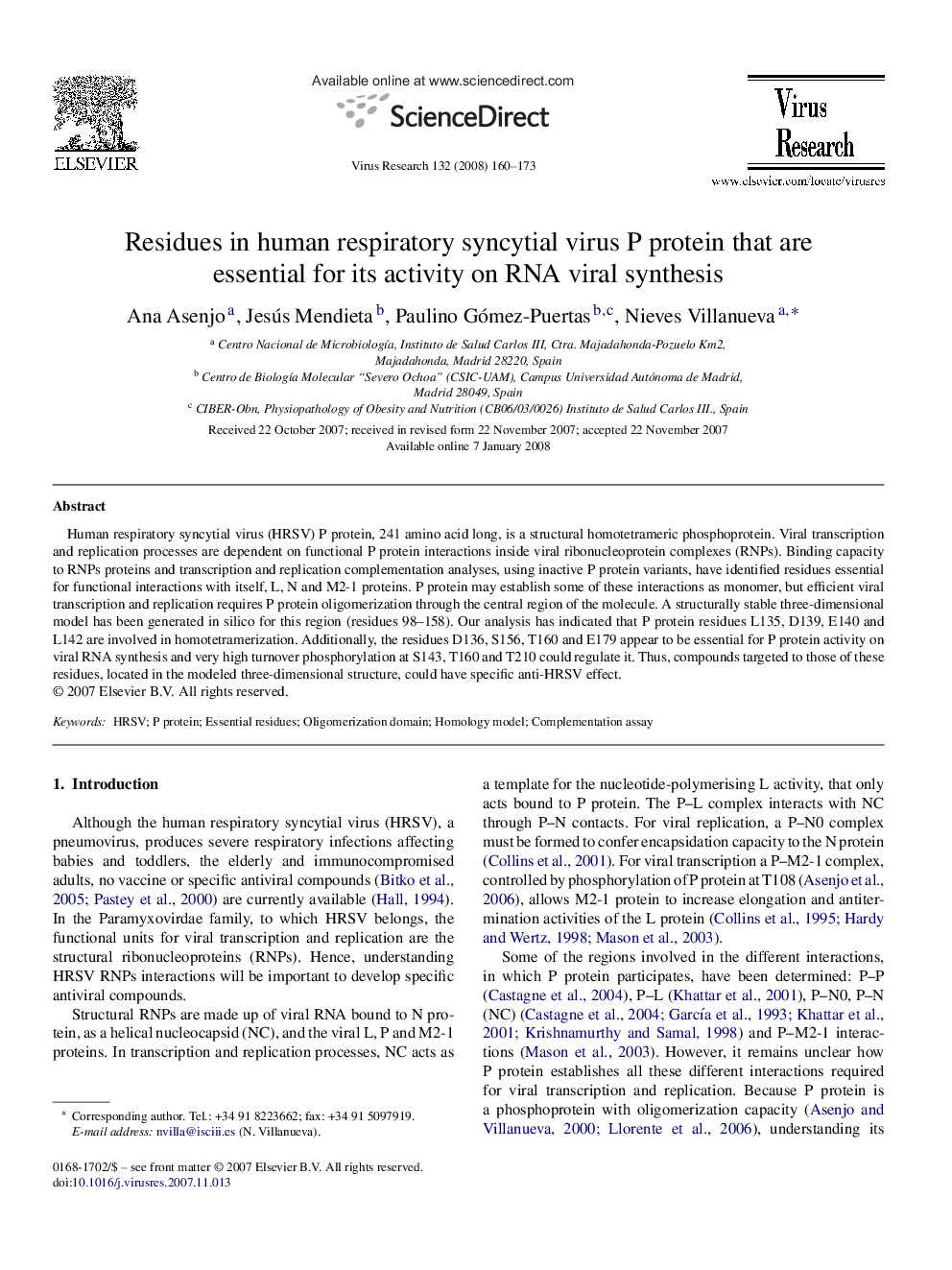| Article ID | Journal | Published Year | Pages | File Type |
|---|---|---|---|---|
| 3430522 | Virus Research | 2008 | 14 Pages |
Human respiratory syncytial virus (HRSV) P protein, 241 amino acid long, is a structural homotetrameric phosphoprotein. Viral transcription and replication processes are dependent on functional P protein interactions inside viral ribonucleoprotein complexes (RNPs). Binding capacity to RNPs proteins and transcription and replication complementation analyses, using inactive P protein variants, have identified residues essential for functional interactions with itself, L, N and M2-1 proteins. P protein may establish some of these interactions as monomer, but efficient viral transcription and replication requires P protein oligomerization through the central region of the molecule. A structurally stable three-dimensional model has been generated in silico for this region (residues 98–158). Our analysis has indicated that P protein residues L135, D139, E140 and L142 are involved in homotetramerization. Additionally, the residues D136, S156, T160 and E179 appear to be essential for P protein activity on viral RNA synthesis and very high turnover phosphorylation at S143, T160 and T210 could regulate it. Thus, compounds targeted to those of these residues, located in the modeled three-dimensional structure, could have specific anti-HRSV effect.
